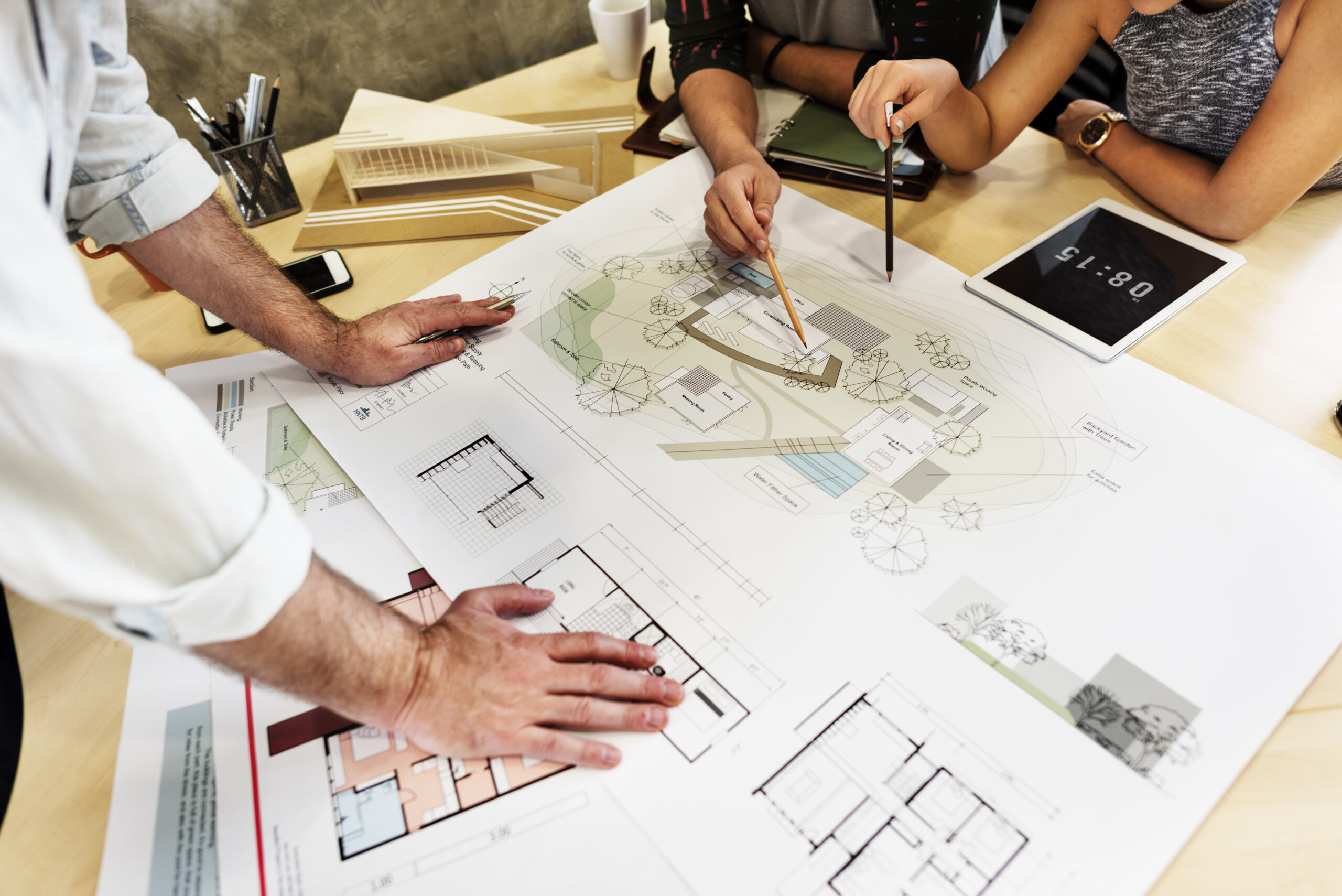Get with the Program: The Design Process

When the car breaks down, you call a mechanic. When you have a toothache, you go to a dentist. When you feel ill, you see a physician. When you have problems with the spaces within which you work and live, why not consult with an architect? An architect will work with you to learn what the problems are (symptoms), define what needs improvement (diagnosis), and how to achieve it (cure). The process of working with an architect typically has several phases, as follows:
1. ESTABLISH THE PROJECT DETAILS
The planning phase is a critical aspect of any remodel or new construction project. First, we determine the type of Architectural Design Service that will be best suited to your project, such as “full service” (a comprehensive process that involves the architect in virtually every aspect of the project) or “designated services” (which cover more specific aspects of the project). Next, the scope, budget, schedule and other project consultants and team members are discussed, including defining how the architect will be compensated. Two options to consider are a fee based on percentage of construction cost, or a fee estimate determined by the scope of the project that is billed at hourly compensation rates for work performed by the architect. A good design firm should offer flexible options to consider that are reasonable and acceptable to the client.
2. ASSESS THE EXISTING STRUCTURE
If remodeling the existing home is the direction forward, the condition of the structure will need to be assessed. If drawings or “blueprints” of your existing home are available, we’ll start there. Otherwise, measurements are taken and a digital “as-built” drawing is prepared.
3. CREATE THE PROGRAM
The next step is to create a program that describes needs and problems with existing conditions and desired improvements. Then, the architectural style and specific details and materials regarding interior and exterior are discussed along with special amenities or aesthetic elements. Finally, we analyze and establish the needs and spatial organization of spaces, their sizes and their relationship to one another.
4. REVIEW ZONING & SITE
Each municipality has their own ordinances, limits, and exceptions that must be reviewed and confirmed for your specific project. There are four key zoning considerations for any remodel or rebuild project: zoning district, lot size, setbacks, and height. Once a zoning review has been completed, it should be clear what regulations one will need to comply with. This will provide a better understanding of your property and the options and challenges you will need to address. Then, a site study is compiled to determine the orientation and relationship of the building to the site and critical elements such as access, vegetation, orientation, views, prevailing winds, and seasonal sun and shade.
5. CREATE & REFINE THE DESIGN
In this phase, we start to design in sketch form through a collaborative process to produce a concept and design direction. First, floor plans, exterior and/or interior sketches, and a site study are presented. The process might require a few design iterations with changes or tweaks before a final concept has been accepted. Then, a refined design is produced based on changes from the sketch form design phase. Floor plans, elevations, and details are prepared with greater accuracy through the computer-aided drawing process. Scale and dimension are further developed, and Interior and exterior details are designed, along with additional architectural features such as cabinetry, stairs, fireplace, and other details specific to the project.
6. PRODUCE CONSTRUCTION DOCUMENTS
Finally, construction documents (also referred to as blueprints or building plans) are produced. In this phase, a complete set of documents is produced at a level of detail and complication required to communicate the design to the project consultants, and is used to obtain permits and other necessary approvals from the municipality. The Construction Document set will also contain drawings and other documentation from consultants and other design team members.
The design process is a critical step in building your dream home. Working through these phases with a professional architectural design firm will help you clarify your goals, crystallize your desired solution, and have fun as the project evolves.

